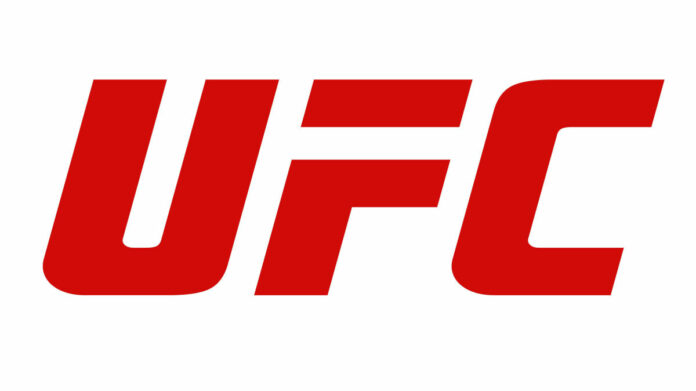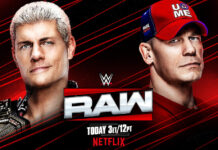
When the WWE merged with the Ultimate Fighting Championship last year to form the TKO corporation under the Endeavor parent company, it rightfully made waves throughout the entertainment and sports world. At the launch of the publicly-traded TKO corporation, the newly-formed organization was valued at a staggering $21.9 billion, with just over $12 billion of that brought to the table by the MMA league. Still, the WWE side of the equation, besides the $9 in equality, brought a key piece of the puzzle to the merger, as the WWE was already publicly-traded so it was much easier to get the UFC as a commodity on the stock market because the sports entertainment group already had an estimated value and track record in the market place.
Investors had already proven that they were willing to put cash into the WWE brand, and had seen a healthy return on that investment so it created a sense of optimism around the joint venture with the UFC. Generally speaking, the TKO stock has done well, with the massive 10-year deal that took Raw to Netflix for $5 billion for the duration of a contract that has a five-year option on it. Make no mistake about it, the transition to Netflix, as well as the $1.4 billion that USA paid for the rights to Smackdown for the next five years provides a level of stability for investors because it’s guaranteed revenue for the corporation.
Part of the reason that the WWE/UFC merger made so many headlines when it was completed was that obviously, nobody ever thought that Vince McMahon would sell the company that he put his entire life into, and the amount of combination media muscle that it had as a commodity.
At a time when the media landscape continues to evolve with different forms of distribution and different types of distribution channels, it puts the TKO group ahead of the curves in many ways with the sheer number of live events, as well as tens of thousands of hours of footage in its video library under one banner. Keep in mind, at a time when there’s more competition for viewers and listeners than any other time in history, networks and advertisers are willing to pay a premium to get their products and programs in front of the targeted demographic. Every cable channel, broadcast network, streaming service, Youtube video, and podcast are looking to get their piece of the pie in terms of the audience.
The UFC’s deal with ESPN, which has primarily been used as the foundation of the ESPN+ streaming service runs through 2025 with negotiations between the two sides that started recently. Depending on your perspective, the ESPN contract either hindered or helped the MMA brand. When ESPN put up big cash for the PPV rights, fans had to pay to subscribe to the streaming service just for the option to order the pay-per-views at an additional cost. Furthermore, the price of events, pay-per-views that were priced at $34.95 prior to the surge in popularity of the Ultimate Fighter two decades ago, increased to $79.99 each month. Sure, the price of pay-per-views steadily increased over the years, but I don’t think many people would’ve expected there to be a time when it would cost $80 to watch a UFC event. However, as a way to justify those costs to customers, the Fight Night cards are included in the subscription fee. So, the fans have almost weekly fight cards that can be watched without paying the PPV price.
However, and this is the biggest issue that has surfaced from the current structure of the ESPN deal, there’s simply an oversaturation of UFC content and there are too many cards to realistically keep up with to be able to follow the product the way that many fans did in the past.
The domino effect of this is that contenders that fans aren’t as familiar with are slotted for PPV spots and thus those pay-per-views don’t have the same cache as they did years ago. It sounds trivial, but there are too many fighters to even try to keep track of, which was a result of when the roster was flooded to cover the addition of those near weekly events to the calendar.
This weekend’s UFC 314 event is a prime example of how the number of cards has diluted the product and how some very talented fighters are lost in the shuffle compared to where they probably would’ve been in a different era.
One of the major issues that has become a huge reason why the product is very diluted is that the title lineage within different divisions is often disrupted in ways that didn’t happen during the peak Zuffa era. This started when Conor McGregor was gifted title shots within competing in certain divisions prior so that management could promote him as a double champion. He took that marketing push to boxing and made $100 million to fight Floyd Mayweather. That effectively froze the featherweight division for a few years in the organization. How many times has Jon Jones either been stripped or vacated a belt?
The point being, there isn’t a chance for the traditional “star-making performance” when a competitor doesn’t get the chance to defeat the best in the division for the championship.
The examples of this are numerous, but just a few to demonstrate the point, when George St. Pierre knocked out Matt Hughes in 2006, it was clear that there was a new force in the welterweight division. When Anderson Silva broke Rich Franklin’s nose in route to claiming the 185 LBS title, the MMA world was put on notice that there was a new pound-for-pound king of the sport. Before injuries completely derailed his career, Cain Valssquez looked poised to take the heavyweight throne when he pummeled Brock Lesnar in the first round of their 2010 main event.
That doesn’t happen too often in the modern era.
Don’t get me wrong, there are still many quality fights in the UFC, and at least two or three really entertaining bouts on any given UFC pay-per-view card, but there simply aren’t those memorable moments because of the structure of the divisions.
As mentioned, UFC 314 is a microcosm of this situation, as Ilia Topuria, who beat Alexander Volkanovski for the Featherweight belt last February before he retained it against Max Holloway last October, vacated the title to be able to move up to the light heavyweight division. So, Volkanovski, who lost his most recent fight against the previously mentioned Topuria, was scheduled for the main event against Diego Lopes to determine the new champion. Volkanovski, who hasn’t fought for over a year, doesn’t get a chance to avenge the title defeat, but rather gets the consolidation prize of the opportunity to win the title again without beating the previous champion. Diego Lopes, who has a five-fight winning streak ahead of this weekend’s event, hasn’t fought since last September so despite being a solid contender for the championship, he just isn’t one of the more well-known fighters that you’d expect to be on the marquee of an $80 pay-per-view.
The co-main event will see Micheal Chandler square off against Paddy Pimblett in what should be an entertaining bout that might steal the show. However, the 38-year-old Chandler has lost four of his last five contests so it’s very possible that he might be near retirement. On the flip side, Pimblett is undefeated in the UFC, bringing an eight-fight winning streak into the octagon. It’s a shame because Chandler was a guy that was a mainstay for Bellator before he inked a UFC contract, and had a lot of entertaining contests in the organization, but didn’t get the major payday from the Conor McGregor bout that never materialized. As we know, the Chandler/McGregor clash was scheduled to happen, as they were coaches on a season of The Ultimate Fighter, but the Irishman never entered the testing pool so he obviously never had an intention to compete. Speaking of Bellator, longtime staple of the promotion, Patrício Pitbull will finally make his UFC debut, but he’s a competitor that will only be familiar to the diehard MMA audience. Truth be told, while it’s great that he will probably make the biggest money in his career fighting in the UFC, he’s already 37 so it’s possible that he might be past the prime of his career.
According to Forbes, UFC brass is looking for $1 billion a year for their next media contract, a major increase from their current deal. From the UFC side of the equation, the guaranteed money is exactly what the corporation wants, especially because of the previously mentioned TKO stock price. It’s a safe bet for the UFC because they receive a guaranteed amount of money regardless of how many viewers order the PPV. Obviously, it’s very beneficial for the UFC brand to be distributed by ESPN because the cable channel quite literally has a vested interest in the promotional push to sell pay-per-views. Keep in mind, ESPN pays a certain amount for the media contract with the notion that it would profit on the level of revenue generated above that number. The original $1.5 billion contract was signed in 2018, with a two-year extension added to that.
Since 2018, there was a major shake-up at ESPN when they opted to part ways with several of their most well-known broadcasters in an effort to reduce costs. Essentially, most of the on-air talent that had the highest-paying contracts were axed because with the increase in media options, particularly within sports coverage, ESPN had to adjust to a smaller piece of the pie. It’s also worth noting that the cable network is owned by the Disney company, which also had its share of shake-ups in recent years, specifically when CEO, Bob Iger returned from retirement since Bob Chapek was dismissed from the position after the company lost billions of dollars from its Disney+ streaming service.
Sure, Mickey isn’t going to slug it out with Goofy in the cage, but the overall financial standing of the company could have an effect on how much money ESPN would realistically offer to keep the UFC. It goes without saying that Netflix could be an option for the MMA league since the platform has already made an investment in the TKO corporation with the contract that brought Raw to the service. It remains to be seen where the UFC signs with next, and there’s still months for the two sides to negotiate, but a consolation prize championship as the main event of UFC 314 isn’t actually a major selling point for the ESPN network.
What do you think? Share your thoughts, opinions, feedback, and anything else that was raised on Twitter @PWMania and Facebook.com/PWMania.
Until next week
-Jim LaMotta
E mail [email protected] | You can follow me on Instagram, Facebook, & Threads @jimlamotta89







